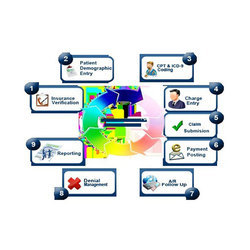
Boosted speed of communication, boosted speed of transportation, lightening fast life style is the theme of WWW dominated modern life. Yes, these are the factors adding to the fast moving modern life style. But when it comes to the health segment, it is seen that that the services are not as fast as the other services are. The very beginning, the record keeping of the patient is the first stage from where this concern starts. Well, with the introduction of Electronic Medical Record system the lightening fast style has also entered into the area of medical record keeping. An EMR software in place helps in proper management of patients’ medical record in the form of an electronic format which is easily accessible by the computers on that network for the purpose of health-related services.
The electronic medical record includes reports of the patient, documents relating to the conditions as per his past, present or future physical and mental health, test reports, x-rays, and financial and personal information. To choose the best EMR software that you decide to install at your clinic or hospital or your lab you must look for its ability to perform some standard tasks. One of the tasks an EMR Software should be capable of doing is the capturing of patient data. By the term capturing I mean the ability of the software to capture the data entered through a rule defined database system with the help of any computer system used with. The data gathered hence works as the primary data. Secondly, the EMR software you choose should be able to integrate with other related fields or systems. It should be able to incorporate with other systems like financial, administrative, technological and clinical department. It should have the perspective of coordinating with management, billing, laboratory orders and reports, pharmaceutical prescriptions and the drugs store as well. The next important factor you should look for while installing EMR software is that it should always be helpful in getting insight while making a clinical decision. These insights range from diagnosis of the patient to the prescription of medicines as per recommendations. Almost all the EMR software available now a day has built in PDR-based medication dictionaries which provide doctors with Adverse Drug Event (ADE) alerts. It also provides the doctor generic drug recommendations and dosage recommendations. Depending on a patient’s diagnosis, EMR software also can make treatment recommendations. Regular check up interval reminders through EMR helps the concerned doctor and his staff to get updated about the patient. And good EMR software also makes alerts for the doctor in a situation like emergency. The next point of consideration for EMR software to be installed is the ease of accessibility. Ease of accessibility means the availability of required data like charts, reports, x-rays for an interpretation just at a single click. The next big issue concerned with the installation of EMR software is the security issue. All the EMR software with good security concern comes with enhanced administrative modules enabling the administrator to manage the accessibility to the database of electronic medical records of patients.
Last but not least, the EMR software you are about to install should be able to deliver a proper service towards the care of each and every patient whose records are feed into it.


